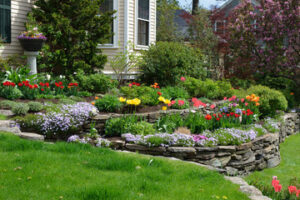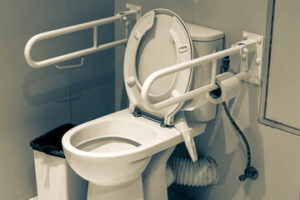Moisture infiltration from aging or damaged siding can lead to mold, mildew and serious health issues. Replacing it before this happens will save you money on mold removal services and repair costs down the line.

When a section of siding becomes damaged, the overall appearance of your home suffers. Even a small hole or cracked panel can be an eyesore and a deterrent to potential buyers. In addition, the damage allows moisture into your home, which can lead to structural damage, mold and mildew, and other issues that will require costly repair or replacement. Contact Replacement Siding Richmond VA for professional help.
Damaged siding also provides easy access for pests, which can damage wood framing and insulation. Whether the siding is made from vinyl, wood or aluminum, a crack or hole offers a warm welcome to insects and rodents, which will eventually cause further damage. If you see signs of a rodent infestation, such as holes or tracks near the roof, or if you have noticed an increase in your energy costs, these are important indicators that it’s time to replace your siding.
In some cases, the damage is extensive and the entire section of siding must be replaced. This is typically the case with wood siding that has been warped by weather changes or from rot or insect damage, or in areas where moisture has caused severe decay and discoloration.
A professional will saw out the affected sections and install new materials. While this is a more costly option, it ensures that your home is protected from further moisture and other issues.
If you are considering a DIY siding repair, you will need a number of tools to complete the job. These include replacement siding that matches your existing material, a circular saw to cut the new materials, stainless steel siding nails and a hammer. Nails should be 7d galvanized ring-shank nails, which will provide maximum durability and prevent corrosion. It’s also a good idea to have some sandpaper on hand, which can be used to smooth rough edges on the newly installed siding.
Once you have the materials, start by carefully assessing the damaged area. Ideally, you will need to leave at least 2 inches (5.1 cm) of space around the damaged area, and the damage should extend from the bottom of the side wall to the top of the next piece. Use a utility knife or tin snips to cut around the damaged section and loosen it from the rest of the siding. A pry bar or zip tool can be used to help you remove the damaged section.
Faded or Cracked Paint
Getting your siding repainted is an easy way to spruce up the exterior of your home. This will also increase its curb appeal and resale value. But if you’re concerned about color fading, it’s important to choose paint that’s fade-resistant or water-resistant. This will help prolong the life of your vinyl siding and ensure you’re getting a good return on your investment.
Cracked and faded vinyl siding isn’t just unsightly, but it can allow for a host of unwanted intruders to enter your home. These gaps can let in moisture, bugs and drafts that will lead to more extensive damage over time. To prevent this from happening, it’s best to fix any cracked or damaged areas right away.
A little caulking goes a long way in fixing holes and small cracks. First, clean the area to remove any dirt or debris that may hinder a strong bond with the caulk. Then, load a caulking gun with waterproof caulk and apply a small bead to the crack. Using a putty knife, smooth the caulk to make it even with the surrounding surface and overfill slightly for added durability. Then, let the caulk dry according to the manufacturer’s instructions. Once it’s completely dried, use fine-grit sandpaper to smooth out the edges and blend it in with the surrounding vinyl.
Another reason you might want to take on a DIY siding project is to remedy sun-fading. This is common with many types of painted surfaces and it happens naturally over time due to sunlight exposure. Slight fading is okay, but extreme fades can make the surface look worn and unattractive.
Fading is especially noticeable on homes with windows that receive direct sunlight throughout the day. If you notice that your vinyl siding has faded, cleaning it and repainting it with a fade-resistant paint will help preserve its appearance and resale value. When painting, be sure to follow the product data page and label directions for proper surface preparation and use a high-quality paint that’s designed specifically for siding materials to ensure a long-lasting finish. Avoid painting in direct sunlight or during extreme temperatures, as these can cause the paint to dry too quickly and create uneven coverage.
Moisture Issues
Moisture damage is a huge concern with replacement siding, as it can lead to expensive repairs and structural issues. Even the smallest opening in the protective layer of your siding will allow moisture to penetrate, which can then cause wood materials to swell or rot. Moisture can also soak into the insulation and drywall of your home, further damaging it. When left unchecked, the moisture can then spread to other areas of your home, causing even more problems.
In order to protect against moisture damage, it is important to inspect your siding regularly, especially after severe weather. Look for cracks, sagging, discoloration and warping in the siding. Check for mold or mildew growth on the surface of your siding, as well as musty odors that may indicate hidden moisture problems. You can also test your siding for moisture by pressing on it in different places. If it feels soft or spongy, this is a sign of water infiltration and should be addressed immediately.
You can prevent these problems by ensuring that gutters are working properly and directing rainwater away from the walls of your house. Make sure that there is sufficient ventilation in your attic and crawl space to reduce humidity levels as well. Keeping trees and other vegetation trimmed will help prevent moisture buildup under your siding as well.
When you notice moisture issues with your replacement siding, it is vital to act immediately. Moisture will continue to penetrate the board and erode the underlying plywood, leading to rotting, fungus and mold growth that can compromise the structural integrity of your home. If you wait to resolve the problem, it can result in further damage that will require costly repairs.
If you are noticing moisture damage in your Connecticut home, contact us today to learn more about replacing your vinyl or wood siding with a durable, low maintenance product like James Hardie Plank. We have a wide selection of colors and styles to suit your taste, and we will work with you to find a solution that fits your budget. We pride ourselves on offering affordable and high-quality services.
Energy Costs
During the winter, cold air can slip into your home through worn, damaged siding, making it harder for your furnace to keep your house warm. When this happens, energy bills soar. In addition, the cold drafts can cause a host of other problems, including wood damage, plaster cracks, and compromised electrical wiring.
Replacing old, ineffective siding with new insulation can drastically cut your energy costs and improve your home’s overall comfort. It’s a simple home upgrade that will provide both a high initial return as well as sustained long-term savings, allowing you to spend less on your energy bills and reduce your environmental impact.
When choosing a siding material, look for a product with an energy-star rating. You can also choose a thicker, harder-density material that offers better thermal resistance. This will help your home retain heat in the winter and stay cool in the summer, making it more energy-efficient.
The size of your house will also influence the cost of the materials and labor involved in siding replacement. Residences with multiple stories, dormers, turrets, cupolas, and other unique design features require more materials than simpler houses. This is because they require complex cuts that necessitate extra material. In addition, they’re typically more difficult to work with due to unconventional wall angles that are hard to fit in standard siding panels.
Siding replacement is a significant investment that enhances your home’s aesthetics and energy efficiency, and raises its overall value. It’s important to weigh the pros and cons of each option to find the right balance between affordability, durability, and long-term protection. In addition, proper planning can ensure that the initial costs are offset by significant savings over time. The good news is that even if you cannot afford to pay for your new siding upfront, financing options like Wells Fargo and GreenSky offer 12 months interest-free and 120 days interest-free respectively, making it easier for homeowners to get the upgrades they need sooner rather than later.

